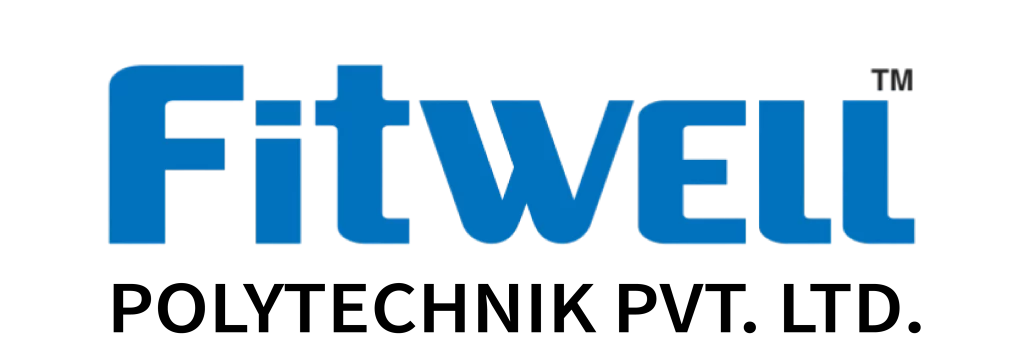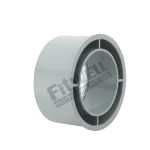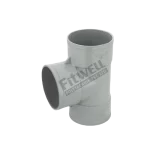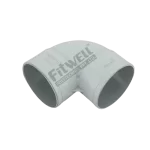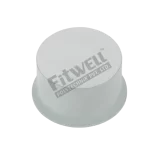MDPE Fittings: Uses and Advantages
Introduction
MDPE (Medium-Density Polyethylene) fittings have become an integral part of modern plumbing, irrigation, and gas distribution systems. Known for their flexibility, durability, and cost-effectiveness, these fittings offer a reliable solution for various piping requirements. In this comprehensive guide, we will delve into everything you need to know about MDPE fittings, including their uses, benefits, installation process, and environmental impact. Whether you’re a contractor, homeowner, or industry professional, understanding MDPE fittings can help optimize your piping system for longevity and performance.
What are MDPE Fittings?
MDPE fittings are components used to connect, branch, or terminate MDPE pipes in various plumbing, irrigation, and gas supply systems. MDPE is a type of polyethylene with medium density, striking a balance between flexibility and rigidity. This material is known for its excellent resistance to impact, chemicals, and UV radiation, making it suitable for both indoor and outdoor applications.
Types f MDPE Fittings:
- Compression Fittings: Designed for easy and secure connections, often used in water and gas distribution systems.
- Electrofusion Fittings: Provide a more robust and leak-proof connection by using an electric current to fuse the fitting to the pipe.
- Push-Fit Fittings: Allow quick and simple installation without the need for additional tools, commonly used in plumbing and irrigation systems.
Benefits of Using MDPE Fittings
MDPE fittings are preferred in many industries due to their distinct advantages over traditional piping materials like metal or PVC.
1. Durability and Flexibility
MDPE fittings offer an impressive balance between durability and flexibility. They can withstand high pressure and temperature variations, making them ideal for a range of applications, including underground piping. The flexibility of MDPE also allows it to absorb shock and vibration, reducing the risk of pipe damage during installation or under external stress.
2. Corrosion and Chemical Resistance
Unlike metal fittings, MDPE fittings do not corrode when exposed to moisture, chemicals, or extreme weather conditions. This resistance ensures a longer service life, particularly in environments with high chemical exposure, such as agricultural irrigation systems.
3. Ease of Installation
MDPE fittings, especially compression and push-fit types, are designed for quick and hassle-free installation. They do not require specialized tools or skills, making them a practical choice for both professionals and DIY enthusiasts.
4. Leak-Proof Connections
When installed correctly, MDPE fittings provide leak-proof connections, minimizing water loss in irrigation systems or preventing gas leaks in distribution networks. This reliability is crucial for maintaining the safety and efficiency of piping systems.
5. Cost-Effectiveness
MDPE fittings are generally more affordable than metal alternatives and offer lower maintenance costs over time due to their resistance to wear and corrosion. This cost-effectiveness makes them a preferred choice for large-scale plumbing and irrigation projects.
Common Uses of MDPE Fittings
MDPE fittings are versatile and are used in various applications due to their robust properties:
1. Water Supply Systems
MDPE fittings are widely used in residential and commercial water supply systems, providing a reliable means of transporting water from mains to buildings. Their corrosion resistance ensures that water remains uncontaminated throughout the distribution process.
2. Gas Distribution
The flexibility and durability of MDPE make it an ideal choice for underground gas distribution systems. MDPE fittings are used to connect pipes securely, ensuring a leak-proof network that can withstand ground movements and environmental stresses.
3. Irrigation Systems
In agriculture, MDPE fittings play a crucial role in irrigation systems, allowing water to be efficiently distributed across fields. Their resistance to UV radiation and chemicals makes them suitable for both surface and subsurface irrigation methods.
4. Industrial Plumbing
Industries that require the transportation of chemicals, oils, or other fluids often use MDPE fittings due to their high resistance to chemical reactions and pressure fluctuations.
Manufacturing Process of CPVC Piping Systems
MDPE Fittings Installation Process
Proper installation of MDPE fittings is key to ensuring a reliable and efficient piping system. Below is a general overview of how to install compression MDPE fittings:
Step-by-Step Installation Guide:
- Cut the Pipe: Use a pipe cutter to make a clean, straight cut on the MDPE pipe. Ensure there are no burrs or rough edges that could interfere with the fitting.
- Prepare the Fitting: Unscrew the compression fitting and slide the nut and compression ring onto the pipe. Make sure the fitting is clean and free from debris.
- Insert the Pipe: Push the pipe into the fitting until it reaches the internal stop. Check that the pipe is fully seated to ensure a leak-proof connection.
- Tighten the Nut: Hand-tighten the compression nut, then use a wrench to give an additional half-turn. Avoid over-tightening, as this can damage the fitting or pipe.
- Check the Connection: Once installed, test the connection by running water or gas through the system to check for leaks.
Pro Tip: Always refer to the manufacturer’s instructions for specific installation guidelines, especially when working with different types of MDPE fittings like electrofusion or push-fit.
Environmental Impact of MDPE Pipe Fittings
MDPE fittings are considered environmentally friendly due to several factors:
- Recyclability: MDPE is a recyclable material, and many manufacturers have recycling programs in place to reprocess used MDPE pipes and fittings, contributing to a circular economy.
- Reduced Leakage: Leak-proof connections help conserve water in irrigation systems and prevent gas emissions in distribution networks, minimizing the environmental impact.
- Longevity: The long service life of MDPE fittings reduces the need for frequent replacements, decreasing the overall consumption of materials and energy in piping systems.
Choosing the Right MDPE Fittings for Your Needs
Selecting the right MDPE fittings depends on various factors, including the specific application, pipe size, and environmental conditions. Here are some tips to guide your selection:
- Match Pipe Diameter: Ensure the fitting size matches the pipe diameter to guarantee a secure connection.
- Consider Application: Choose fittings designed for the specific application, such as water supply, gas distribution, or irrigation. Compression fittings are generally suitable for most water systems, while electrofusion fittings are better for high-pressure gas networks.
- Check Material Compatibility: Ensure the fitting material is compatible with the transported fluid to prevent chemical reactions or degradation.
For more detailed product information, visit industry-leading manufacturers like Fitwell.
Conclusion
MDPE fittings are a versatile, durable, and cost-effective solution for a wide range of piping applications, from water supply and gas distribution to agricultural irrigation. Their corrosion resistance, ease of installation, and leak-proof properties make them an ideal choice for professionals and homeowners alike. By understanding the benefits and proper installation methods of MDPE fittings, you can ensure a reliable and efficient piping system that stands the test of time.
Stay on the forefront of industry trends by checking out our latest content
Stay ahead with our latest content, designed to keep you informed on the newest industry trends and insights. Discover valuable updates that help you lead in your field.

Top uPVC Pipes Manufacturers in Rajkot You Need to Know
Introduction to uPVC Pipes and Their Importance Unplasticized polyvinyl chloride (uPVC) pipes are widely recognized for their durability, lightweight design, and cost-efficiency in plumbing and irrigation systems. Unlike traditional metal

Trusted uPVC Pipes Manufacturers for India’s Top Contractors
Introduction: The Surge in Demand for uPVC Pipes Among Top Contractors in India The construction and infrastructure sectors in India have witnessed a significant transition toward sustainable and long-lasting materials.
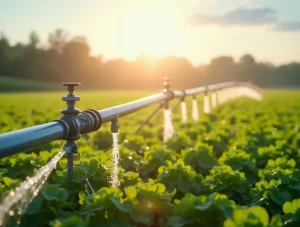
Top Innovations in Agricultural Pipe Fittings for Water Savings [2025]
Introduction to Agricultural Pipe Fittings and Water Sustainability Agricultural pipe fittings play a pivotal role in building efficient irrigation systems, crucial for modern farming practices. By exploring the versatility of
Request a Free Consultation
Get personalized plumbing solutions with a free consultation from Fitwell.
